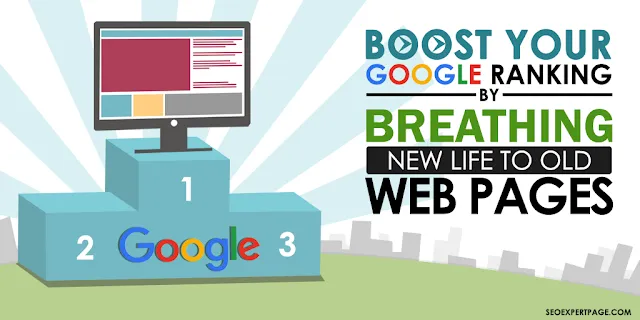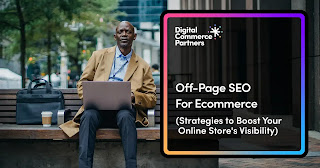Understanding the Impact of Page Experience on Google Rankings
Understanding the Impact of Page Experience on Google Rankings
Introduction:
To be successful in online business, one must be ahead of the always changing topic of digital marketing. Among the most significant factors impacting the visibility of your website, Google Page Experience is very important. With the purpose of clarifying Page Experience, this blog will explain its meaning, significance, and impact on search engine ranking.
The entire user experience on a webpage can be defined by the word page experience. Google aims to provide users with an outstanding online experience using factors like accessibility, speed, and customer satisfaction overall. The importance of these parts for deciding search rankings is made clear by Google's roll out of the Page Experience an update.
What is Page Experience?
The word Page Experience refers to how a user feels about a web page as itself. It considers a number of elements that make for an easy-to-use and interesting browsing experience. Google rates Page Experience using a range of metrics, such as key web vitals, which rate things like visual strength, interaction, and loading speed. Other factors taken into account are flexibility with mobile devices, safe browsing, the use of HTTPS, and the absence of unwanted pop-ups. In the end, a positive Page Experience impacts a website's search engine position and is essential for improved user satisfaction.
Google has accepted these key aspects of the web to be seen benchmarks that form the base of Page Experience:
Loading Performance (Largest Concertful Paint):
A Core Web Vital measure called Loading Performance more easily, Largest contents Paint, or LCP measures the time it takes for the user to see the largest content unit on a web page. This element could be a block-level word element, an image, or a video. When reviewing how quickly people are able to engage with a page's core content, LCP is important.
Interactivity (First Input Delay):
A web page's performance is also measured by another Core Web Vitals metric: exchange, specifically First Input Delay (FID). FID checks how long it takes a user to interact with a page for example, by clicking a button or link and the time it takes the browser to respond. A fast FID is crucial for providing a smooth and responsive user experience.
Visual Stability (Cumulative Layout Shift):
One of the Core Web Vitals measures, Visual Stability defines how stable a web page's layout is while it loads. It is estimated by Periodic Layout Shift (CLS). The extent that unexpected page shifts or moves that impact from the user's visual experience is measured by CLS. A low CLS is advised as it offers a more uniform and nice browsing experience by reducing the chance of unexpected changed the layout for viewers.
Mobile Friendliness: Websites must be mobile-friendly due to the growing use of mobile devices. Websites that are optimized for mobile devices are made to work smoothly and make users' experiences on smartphones and tablets delightful. This includes easy navigation on smaller screens, readable writing, and responsive design.
Secure Browsing (HTTPS): HTTPS (Hypertext Transfer Protocol Secure) secures the data sent between the user's browser and the website, allowing secure browsing. Sensitive data, like payment information and login details, is secured and made private thanks to this security. HTTPS-secured websites are thought to be more secure, and many browsers allow users verify their security status via key icons in the URL field.
Search engines take account of mobile friendliness and safe browsing when rating a website's overall Page Experience, as they both improve user trust and delight. Search engine results are more likely to show websites that give importance to these areas.
The Impact on Google Rankings
The various aspects of Page Experience, including loading performance, interactivity, visual stability, mobile friendliness, and secure browsing, collectively impact a website's Google rankings. Google introduced Core Web Vitals, which include metrics like Largest Concertful Paint (LCP), First Input Delay (FID), and Cumulative Layout Shift (CLS), as part of its ranking algorithm.
Websites that provide a positive Page Experience by optimizing these metrics are more likely to rank higher in search engine results. Google aims to prioritize websites that offer a seamless and user-friendly experience, and the Core Web Vitals are one way to measure and evaluate this.
Additionally, factors like mobile friendliness and secure browsing contribute to overall user satisfaction and trust, which can indirectly influence rankings. Google has been emphasizing the importance of these user-centric metrics to encourage website owners and developers to prioritize a better experience for their visitors.
In summary, investing in a positive Page Experience, as defined by Google's criteria, can positively impact a website's rankings in search engine results.
Tips for Improving Page Experience
Optimize Loading Times: Compress and optimize images, minimize server response times, and prioritize critical rendering path to speed up page loading.
Streamline Interactivity: Optimize and defer JavaScript, reduce unnecessary third-party scripts, and use asynchronous loading for non-essential elements to improve user interaction.
Stabilize Visual Elements: Specify dimensions for media, avoid dynamic content that may shift layout, and use CSS animations instead of JavaScript to enhance visual stability.
Mobile-Friendly Design: Implement responsive web design, test for various mobile devices, and ensure touch-friendly elements for a positive mobile user experience.
Secure Browsing: Obtain an SSL certificate for HTTPS, update internal links, and redirect HTTP traffic to HTTPS for a secure and trustworthy browsing environment.
Trim Page Bloat: Minimize unnecessary elements, optimize code, and limit the use of large media files to reduce page size and improve loading speed.
Regular Monitoring and Feedback: Utilize tools like Google Page Speed Insights, monitor performance consistently, and gather user feedback to make ongoing improvements for an enhanced overall Page Experience.
Conclusion: Creating Page Experience as the most important objective is now important in the harsh world of online visibility. Understanding and optimizing for mobile friendliness, secure usage, and other key web parts will help you not only meet Google's demands for higher levels, but also give your users with a wonderful visit. Remaining loyal to offering a great Page Experience will be an important strategy for success in the world of websites as technology advances faster.





Comments
Post a Comment